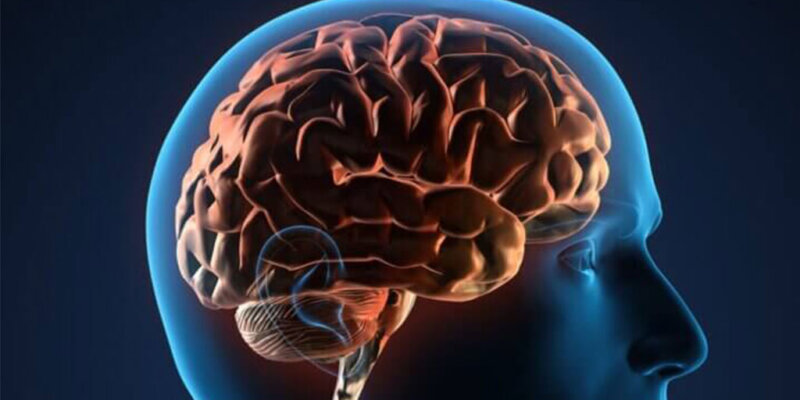Low vitamin D levels in the blood have been consistently associated with poor brain function. Though vitamin D is usually talked about with regard to bone health, several studies have shown the harmful effects of low vitamin D in relation to heart and brain health, mood issues, diabetes, autoimmune conditions and higher susceptibility to SARS CoV2 infection. Though we know about the harmful effects of low vitamin D levels, a recent editorial in the journal NEJM commented “….providers should stop screening for 25-hydroxyvitamin D levels or recommending vitamin D supplements, and people should stop taking vitamin D supplements in order to prevent major diseases or extend life,”
Is that right?
Can you raise your vitamin D levels only by exposure to sunlight and food? What about people with darker skin colour? Does the brain need more vitamin D? Does the same dose of supplemental vitamin D work for everyone? What did the NEJM study miss?
Low vitamin D3 levels and brain function
Bone Ca, energy metabolism, immune system, https://www.ncbi.nlm.nih.gov/pmc/articles/PMC9332464/
A study published in Neurology in 2014 revealed that compared to people with vitamin D levels above 50 nmol/L (20 ng/mL) those with the lowest levels (less than 10 ng/mL) not only performed more poorly on mental tests, but they also had more than double the risk of developing Alzheimer’s disease and other types of dementia.
Even a moderate deficiency, with vitamin D levels of 24.9 to 50 nmol/L (10 to 20 ng/mL) was associated with a 53 percent increased risk of developing dementia and a 69 percent increased risk of developing Alzheimer’s disease compared to those who had more than 50 nmol/L (20 ng/mL).
Littlejohns,2014
Observational versus interventional studies
A 2017 meta-analysis (a study of multiple studies) studying the effects of low vitamin D on cognition looked at 26 observational studies and 3 intervention studies and concluded that “Observational evidence demonstrates low vitamin D is related to poorer cognition; however, interventional studies are yet to show a clear benefit from vitamin D supplementation.”
An observational study is one where researchers observe the effects of for example vitamin D levels and cognition but without any intervention. Observational studies cannot tell us about causation. What does that mean?
A group of people join an observational study, their baseline vitamin D levels and brain function are examined, then they are followed for some time, usually in years rather than months and their vitamin D levels and brain function are checked again. Several such studies have shown that low levels of vitamin D are related to worse cognition. But does low vitamin D cause dementias? Or is it possible that people with low vitamin D levels also don’t spend significant time outdoors or do not eat vitamin D-fortified food? Or is it likely that poor cognition affects their lifestyle?
Logically it would seem that increasing vitamin D levels through supplementation, food fortification and sunlight exposure should reduce dementias like Alzheimer’s disease and improve brain function. Here is where we need interventional trials.
An interventional trial is one where in a group of people with low vitamin D levels one sub-group is given vitamin D supplements, they are asked about their food and sunlight exposure and the second sub-group is given dummy pills (no vitamin D in them).
At the end of the trial, both subgroups are tested for cognitive function and vitamin D levels again. The questions we would like to answer are several:
1) Did the group that was given vitamin D supplements (the intervention) have better cognition at the end of the study? This answer would depend on how soon they were tested. Cognition may not change much if tested within a few weeks.
2) Is there a certain blood level of vitamin D that is optimal for brain function? We will only know this if vitamin D levels were checked before and after supplementation. Strangely some studies did not check “after” levels.
3) Did all the participants receive the same vitamin D supplemental dosage? Were there differences when a higher dosage was used?
Summary: Based on multiple
How are laboratory ranges of vitamin D decided? Only bones, no brain.
Bone, PTH
Non skeletal benefits 36-40 ng/dl (90-100 nmol/L)
Same levels for all skin colours?
Vitamin D is produced by your body when your skin is exposed to sunlight, specifically, ultraviolet rays B (UV-B). How much vitamin D is produced depends on many factors, the most important being your skin colour and the amount of ultraviolet rays your skin is exposed to.
There are much higher levels of ultraviolet rays (UV-B) near the equator when compared to latitudes further north.
As you can see in the image below, the skin colour of indigenous people becomes lighter as we move away from the equator. This means darker skin colour is present in areas of higher UV-B rays.

UVR and folate
There is an interesting hypothesis first proposed in 1978 by Branda and Eaton and later developed by Jablonski and Chaplain that
Vitamin D affects 99 genes.
vitamin D showed an influence on the interleukin signalling pathway, oxidative stress
response, apoptosis signalling pathway and gonadotropin-releasing hormone receptor pathway. In
addition, on genes involved in the regulation of sequence-specific DNA binding transcription factor
activity, hemopoiesis, B cell-mediated immunity and regulation of translation, as well as the immune system, establishment and/or maintenance of the chromatin architecture, transcription coactivator activity, microtubule cytoskeleton and phosphatidylinositol signalling system.
References
- Goodwill, Alicia M., and Cassandra Szoeke. “A systematic review and meta‐analysis of the effect of low vitamin D on cognition.” Journal of the American Geriatrics Society 65.10 (2017): 2161-2168. https://pubmed.ncbi.nlm.nih.gov/28758188/
- Dissanayake, Harsha Anuruddhika, et al. “Prognostic and therapeutic role of vitamin D in COVID-19: Systematic review and meta-analysis.” The Journal of Clinical Endocrinology & Metabolism 107.5 (2022): 1484-1502. https://academic.oup.com/jcem/article/107/5/1484/6459715#350186640
- Cummings, Steven R., and Clifford Rosen. “VITAL Findings—A Decisive Verdict on Vitamin D Supplementation.” New England Journal of Medicine 387.4 (2022): 368-370.https://www.nejm.org/doi/full/10.1056/NEJMe2205993
- Littlejohns, Thomas J., et al. “Vitamin D and the risk of dementia and Alzheimer’s disease.” Neurology 83.10 (2014): 920-928. https://n.neurology.org/content/83/10/920
- Kagotho, Elizabeth, et al. “Vitamin D status in healthy black African adults at a tertiary hospital in Nairobi, Kenya: a cross-sectional study.” BMC endocrine disorders 18.1 (2018): 1-7https://bmcendocrdisord.biomedcentral.com/articles/10.1186/s12902-018-0296-5
- Luxwolda, Martine F., et al. “Traditionally living populations in East Africa have a mean serum 25-hydroxyvitamin D concentration of 115 nmol/l.” British Journal of Nutrition 108.9 (2012): 1557-1561. https://pubmed.ncbi.nlm.nih.gov/22264449/
- Bhatt, Surya Prakash, et al. “Vitamin D supplementation in overweight/obese Asian Indian women with prediabetes reduces glycemic measures and truncal subcutaneous fat: a 78 weeks randomized placebo-controlled trial (PREVENT-WIN Trial).” Scientific reports 10.1 (2020): 1-13. https://www.nature.com/articles/s41598-019-56904-y
- Branda, Richard F., and John W. Eaton. “Skin colour and nutrient photolysis: an evolutionary hypothesis.” Science 201.4356 (1978): 625-626. https://pubmed.ncbi.nlm.nih.gov/675247/
- Jablonski, Nina G., and George Chaplin. “Human skin pigmentation as an adaptation to UV radiation.” Proceedings of the National Academy of Sciences 107.supplement_2 (2010): 8962-8968. https://www.pnas.org/doi/pdf/10.1073/pnas.0914628107
- Hanel, Andrea, and Carsten Carlberg. “Skin colour and vitamin D: An update.” Experimental Dermatology 29.9 (2020): 864-875. https://onlinelibrary.wiley.com/doi/full/10.1111/exd.14142
- Pasing, Yvonne, et al. “Changes in the human transcriptome upon vitamin D supplementation.” The Journal of steroid biochemistry and molecular biology 173 (2017): 93-99. https://www.sciencedirect.com/science/article/abs/pii/S096007601730081X
- Piil, Jacob F., et al. “Direct exposure of the head to solar heat radiation impairs motor-cognitive performance.” Scientific reports 10.1 (2020): 1-10. https://www.ncbi.nlm.nih.gov/pmc/articles/PMC7210303/


